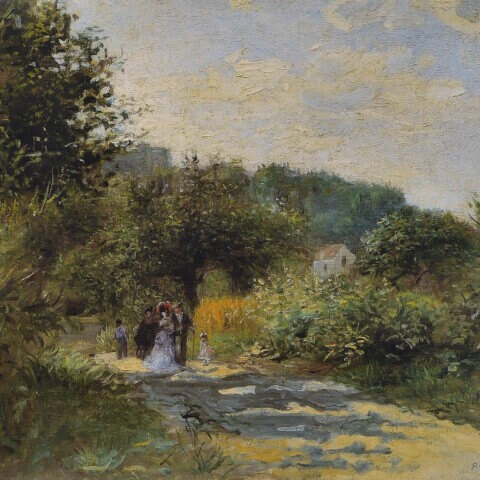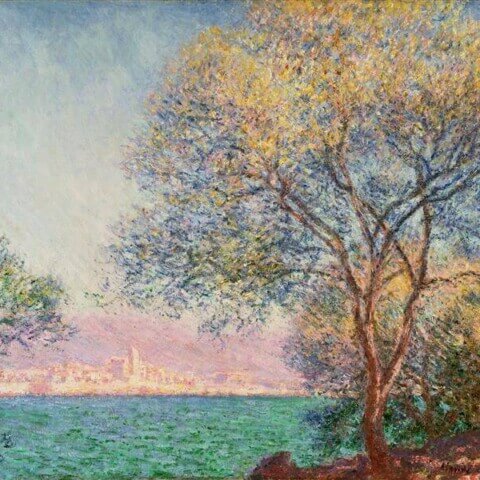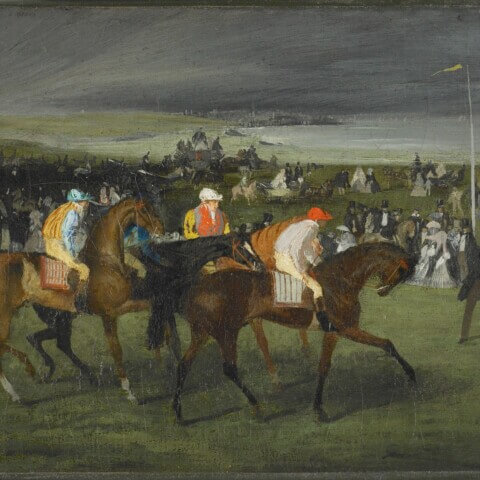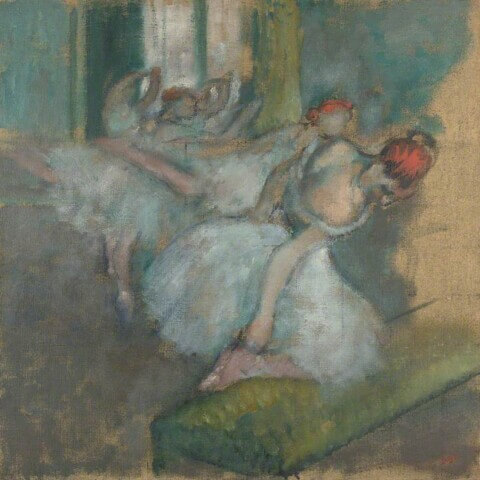Title: Edgar Degas’s “”Rehearsal””: A Captivating Glimpse into the Ballet World
Year Painted: 1874
Edgar Degas’s masterpiece, “”Rehearsal,”” painted in 1874, is a captivating portrayal of the ballet world that continues to resonate with audiences today. Degas, renowned for his depictions of ballet dancers, presents a unique perspective in this artwork, offering an intimate view into the behind-the-scenes rehearsals of these performers.
Degas was deeply fascinated by the grace, discipline, and beauty of ballet. With “”Rehearsal,”” he sought to capture the essence of the dancers’ daily preparations, a theme that would become one of his signature subjects. The painting presents a group of ballerinas engrossed in their practice, their concentration evident in their focused expressions and poised poses.
What sets “”Rehearsal”” apart and makes it a significant work in art history is Degas’s innovative approach to composition and technique. Rather than depicting the dancers in formal poses on stage, he chose to represent them in candid moments during their rehearsal sessions. This shift in perspective was groundbreaking at the time, as it revealed the raw, unguarded side of ballet that was previously unseen.
Degas employed a keen eye for detail and a masterful understanding of light and color to bring the scene to life. The dancers’ tutus and costumes, rendered in vibrant hues, contrast with the subdued background, emphasizing their ethereal presence. Degas’s brushstrokes, loose and energetic, infuse the painting with a sense of movement, as if the dancers were caught mid-motion.
Beyond its technical brilliance, “”Rehearsal”” holds great cultural and historical significance. The painting provides valuable insights into the daily lives and dedication of ballet dancers during the 19th century. Degas’s portrayal of the dancers as they meticulously rehearse, perfecting their art, sheds light on the discipline and rigor required to achieve excellence in ballet.
Moreover, “”Rehearsal”” challenges traditional notions of portraiture by offering a glimpse into a world typically hidden from public view. Degas’s focus on the preparatory moments rather than the grand performances unveils the humanity and vulnerability of the dancers. Through this lens, the painting becomes a testament to the dedication, hard work, and passion that underlie the seemingly effortless elegance of ballet.
Today, “”Rehearsal”” remains a celebrated artwork that continues to captivate audiences with its timeless charm. Its enduring popularity is a testament to Degas’s ability to transcend the confines of his era and capture the universal essence of the human spirit through the medium of art. As viewers engage with this extraordinary painting, they are transported to a bygone era, invited to witness the beauty and artistry that lies within the world of ballet.
In conclusion, Edgar Degas’s “”Rehearsal,”” painted in 1874, is an exceptional work that offers a unique perspective on the ballet world. Through his innovative composition, vibrant colors, and intimate portrayal of rehearsals, Degas reveals the dedication and humanity of ballet dancers, making the painting a cherished masterpiece in art history.
At our art gallery, we take pride in offering comprehensive global shipping to our esteemed clientele. We understand the significance of your art acquisitions and the need to transport them with utmost care. Hence, we are committed to delivering your chosen paintings to any address worldwide and free of any additional charge.
Our reliable courier service partners are experienced in handling precious art pieces and ensure that your painting reaches you in pristine condition. We offer fully insured, door-to-door delivery, providing you with peace of mind that your artwork is protected during transit.
Moreover, to accommodate your unique framing preferences, we offer the distinctive service of sending your purchased artwork directly to any framer across the globe. This enables you to have your painting framed locally by your trusted framer, reducing the risk of damage during transportation.
Regardless of your location or your framer’s, we strive to make the process as seamless as possible. It is our goal to provide exceptional service that caters to your needs and ensures the safe delivery of your valuable artwork.
We invite you to experience our hassle-free, worldwide shipping service, which is aimed at delivering your prized art pieces safely and efficiently, wherever you may be.
Similar paintings
Join our newsletter
Signup for our newsletter and receive our inspiration guide and 20% discount on your first order!









